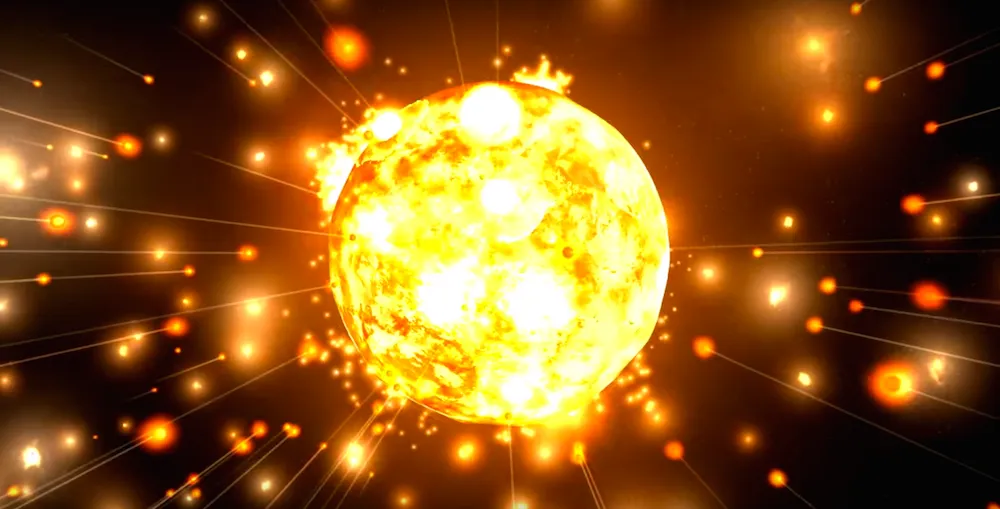“It really becomes the world’s best god simulator,” Dan Dixon tells me; describing what will happen to his life’s work, Universe Sandbox 2, once the VR support he is working to implement goes live.
Universe Sandbox 2 got its start when Dixon began dabbling with a simple gravity simulator in high school. Now, more than 15 years later, the full set of outer space simulation tools is still Dixon’s passion project.
Over time his hobby eventually grew into the original Universe Sandbox that was launched on Steam in May 2008. The sequel was released in August 2015 and is “a complete rebuild of the entire concept from the ground up and in a new engine,” according to Dixon.
Apparently, Dixon subscribes to a no rest for the weary worldview. He says he is once again ready to reinvent this wheel by creating a VR version of Universe Sandbox 2.
“VR is extremely compelling, and super interesting and the idea of being able to manipulate planets is mind boggling and super intuitive,” said Dixon. “Most games have their planets on tracks. You can move planets around and get results. But imagine being able to grab a moon in one hand, the earth in the other and smash them together right in front of your face.”
gfycat.com/ChubbyEmbellishedAcornwoodpecker
As fantastical as this sounds, what Dixon is proposing would actually be quite scientific. Universe Sandbox 2’s main mechanic is a realistic outer-space physics engine that allows you to play out the what-if scenarios of your cosmological dreams. Want to see what happens if the sun was twice as large? Go for it. Want to add another planet into our solar system? Have fun. This means that, in US2, smashing the moon into the Earth, while fun and exciting, will also play out as realistically as it would in real life thanks to the physical laws that govern the game.
Realism will still reign supreme, but Dixon does believe that the VR version of the game should focus more on play and exploration and less on the level sliders and menu windows of the PC version.
“I think it’s fair to say that VR just doesn’t work as well in that way. We’re targeting a more interactive, immersive, and playful experience in VR and trying to avoid the number tuning precise and precise dialing of properties. The simulation running, however, is the exact same as the desktop,” Dixon said.
The interface for the VR system in USV2 will differ from the mouse and keyboard system on desktop and will be centered around motion controls of the Vive Dixon explained:
“You can set the scale you want to look at these bodies to be anything you want. With the Vive controllers you can pinch zoom and move them together or further apart. You can be a giant, or you can make it so you are the size of the human and experience space as it it really would be if you were just floating out there.”
While Dixon did say that his team is experimenting with the idea of creating a version that works with an Xbox controller as well, he feels that hand controls are key to the experience and finds it “disappointing” Oculus Touch will not be available until months after the headset launches.
The combination of scaling, grabbing and moving make up the bulk of planned features for the USV2 VR version at this point. However, Dixon did also mention that his team is experimenting with a VR-only tool that should pique many users’ interest: lasers.
“We’re planning on implementing a laser tool where you can laser planets and watch the Earth scorch in your wake,” Dixon said.
According to Dixon, the VR mode may one day be an in-game button that automatically switches between VR and desktop mode. For now, however, you will need to set up your simulations in the desktop version, save, exit out to the main menu, and then re-launch that same file in VR mode.
The best part about these new features may just be their price. Dixon made it clear that all of USV2’s VR content will be a free and automatic update to anyone who has already purchased the game, and will not increase the standard price of $24.99 for first-time users.
Dixon made a point of avoiding any firm launch dates for the new content. He did say, however, that his team already has a working prototype for the Vive and the only thing left to do is “polish” the experience for release.
“Regardless of what happens this will be an early title for the launch of these headsets,” Dixon said.


























